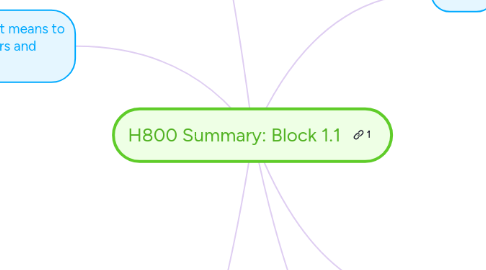
1. Week 3a: Voice/images/text online
1.1. Using the OU Blackboard
2. Week 3b: What it means to learn – metaphors and practices
2.1. Metaphors and approaches to learning
2.1.1. Kolb defined learning as the production of knowledge through the transformation of experience (Kolb, 1984),
2.1.2. Roger Greenaway’s Reviewing
2.1.3. Sfard (1998) argues that metaphors play a key role in thinking, and shape whole approaches to research and the development of theory
2.1.4. … the metaphors we use while theorizing may be good enough to fit small areas, but none of them suffice to cover the entire field … A realistic thinker knows he or she has to give up the hope that the little patches of coherence will eventually combine into a consistent global theory … our work is bound to produce a patchwork of metaphors rather than a unified, homogeneous theory of learning. Sfard
2.2. Conceptions of learning
2.2.1. Students’ approaches to learning and teachers’ approaches to teaching in higher education
2.3. Activity systems
2.3.1. Vygotsky’s (1978) cultural-historical approach emphasises the way in which learning involves tools – symbolic as well as physical – that express the history and culture of a society.
2.3.2. Engestrom expansive learning and activity theory triangle
2.3.2.1. The activity-theory framework is particularly helpful for technology-enhanced learning, where the tools may take on an enlarged or particularly significant role in learning. It embeds tools within the activity relationships, for example, rather than portraying them as an add-on to a pre-existing activity.
2.3.3. ALternative reading: DeVane, B. and and Squire, K.D. 'Activity Theory in the Learning Technologies'
2.4. Identity in cyberspace
2.4.1. Even were communication to take place in a wholly anonymous, wholly online context, we cannot simply throw off the ways in which who or what we can be online is informed by our existence as subjects with bodies … we do not start completely anew when we work online. Despite the reservations outlined here, however, it seems reasonable to approach the issue of identity formation online with a working assumption that within cyberspace identities are more freely transformable, boundaries less firmly drawn, and possibilities for metamorphosis of the self more open. Bayne 2005
2.5. Tutor identity in hyperspace
2.5.1. what emerges most strongly from these accounts is the sense of tutors using the online space to construct themselves as authority figures, and of this construction being far less problematic, far less a cause of anxiety than the descriptions in identity narratives provided by students. There may be a certain sense of disquietude, but there is no sense of guilt, danger or deceit in these tales of metamorphosis.
2.6. Technology-enhanced learning – blurring the boundaries
2.6.1. Vicarious Learning (VL) is the notion that people can and will learn through being given access to the learning experiences of others. Cox,2006
3. Week 2c: Technology-enabled learning in practice
3.1. Radio on the move
3.1.1. ‘The first wave: the beginnings of radio in Canadian distance education’ (Buck, 2006).
3.2. Interactive radio to enhance classroom learning
3.2.1. ‘Using interactive radio to enhance classroom learning and reach schools, classrooms, teachers, and learners’ (Potter and Naidoo, 2006).
3.3. Further reading (2a,2b,2c)
3.3.1. From push to pull: the next frontier of innovation, Brown and Hagel, 2005
3.3.2. Carr-Chellman, A. (2005) (ed.) Global Perspectives on Elearning: Rhetoric and Reality, London, Sage
3.3.2.1. Technology-enhanced learning brings with it a promise that education can be extended to those whose opportunities have been severely limited. However, the question of how far this is happening is a complex issue.
4. Week 1
4.1. Changes when printing arrived
4.1.1. John Nuaghton's online diary
4.2. Generations of information seekers
4.2.1. Information behaviour of researchers of the future
4.3. Are the ‘Net Generation’ great at multitasking?
4.3.1. Rather than the ‘power user’ stereotype that is often associated with ‘Net Generation’ students and their use of technology, a more nuanced pattern of adoption and use is emerging. (Judd and Kennedy, 2011, p.630)
4.4. The Google generation
4.4.1. Rowlands refers to ‘extravagant claims’ that are sometimes made about this generation, and the arguments that there has been a ‘sea change in the way that young people interact with computers and with ICT’
4.5. Additional reading
4.5.1. Adults’ Informal Learning: Definitions, findings, gaps and future research
4.5.2. Five rules of virtuality’, Steve Woolgar
4.5.2.1. careful research into actual experiences of ICT usage is just one half of the major intellectual challenge of understanding the social implications of new electronic technologies. The other half is to convey the importance of the necessary sceptical attitude to those in a position to make key decisions about the genesis and implementation of these new technologies.
4.5.3. What do faculty and students really think about e-books?, Ian rowlands
5. Week 2a: Learning & participation
5.1. Social views of learning
5.1.1. one of the few deeply robust results in most educational theory today is that, in fact, the best indicator of success in college has to do with whether or not you know how to form, join, participate in study groups. Bar none! , John Seely-Brown
5.2. Citizen science and citizen journalism
5.2.1. The comprehensive data collected by volunteers in the Evolution MegaLab allowed us to apply a powerful test of an evolutionary hypothesis linking climate change with polymorphism in the banded snail.
5.2.2. iSpot
6. Week 2b: Technology & pedagogy in higer education in Nepal & Bhutan
6.1. Geographic and cost limitations
6.1.1. Poorest countries
